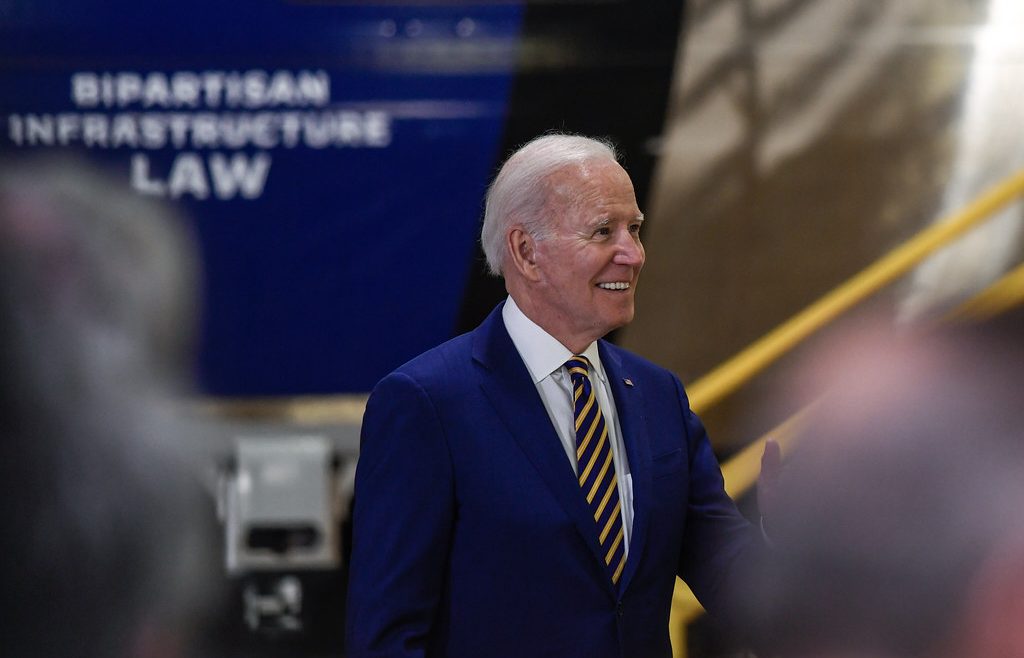A new round of rail grants from the Biden administration could be planting the seeds for an interstate railway system that may someday rival the interstate highway system, some advocates say — and not just along the high speed rail corridors that will be its crown jewel.
Last week, the Biden administration said it would award a staggering $8.2 billion to 10 major rail projects across the country, including funds to complete long-sought high-speed lines linking the greater Los Angeles region to both San Francisco ($3.1 billion) and Las Vegas ($3 billion). A third high-speed line between Raleigh and Richmond also won $1.1 billion, which will complement a $729-million capacity upgrade between Richmond and D.C., helping to complete connections between the nation's northeast and southeast corridors.
BIG NEWS 📢
— U.S. Department of Transportation (@USDOT) December 8, 2023
We're announcing funding for 10 major passenger rail projects across the country. These projects will bring high-speed rail to America, better connect more Americans, and keep our rail network in good repair. https://t.co/4jLeWKs6Q4 pic.twitter.com/MbcIGjgPLm
As those massive headlines dropped, though, so did dozens of smaller leaked announcements about Corridor Identification and Development grants, which will devote $34.5 million to enhancing service in under-served regions — including the three largest U.S. metros that currently have no access to passenger rail at all. Phoenix, for instance, is receiving funding to explore its first-ever route (to Tucson), while Nashville is considering service to Memphis and Chattanooga, with an added connection to Atlanta; Columbus, Ohio, meanwhile, could secure links to Pittsburgh, Fort Wayne, and eventually Chicago.
U.S. DOT also highlighted planning grants for a new high-speed rail project linking Oregon, Washington, and Vancouver, as well as another between Charlotte and the Atlanta airport. In all, the program will improve 15 existing rail routes and lay the groundwork for 54 new routes or network extensions.
And with plans for those routes locked and loaded, advocates will have a strong foundation to fight for even more visionary federal investments in the future — not unlike the one drivers won with the Federal Highway Act way back in 1956.
"Right now, for railroads, there's little bit of federal money that the states can all come begging for, but what we really need is a federal program that covers all the states," said Rick Harnish, executive director of the High Speed Rail Alliance. "So we have this problem where nobody believes there’s ever going to be money — and about every 10 years, there is money, and then nobody’s ready for it. ... [These grants are] a big step towards getting communities engaged in asking the feds for a bigger program."
The Corridor ID program is a good start, but the fact that it has to exist at all exemplifies the problem. Submit a grant and wait a year just to get $500k in planning money? States give out that sort of money to highway projects without a second thought!
— Ryan G-S (@ryangs) December 8, 2023
Harnish said America still has a long road until all these new routes become a reality. But he added that successful projects could help overcome political obstacles and catalyze a movement for more stable funding for the rail sector as a whole.
"Advocates need to get involved on all of these projects," he said. "[We need to make it clear that] we're not looking for two or three trains a day that run slow. We need a bold vision for the future, and that means robust service throughout the day."
Interestingly, Harnish is particularly optimistic about the grant to rail company Brightline West, which received what the Washington Post called "an almost unheard of infusion of federal money for a private project" to build high speed rail between southern California and Las Vegas. That project, which will be built on publicly owned land along Interstate 15, is expected to remove roughly three million cars from the road every year, and could be completed as soon as 2028.
And if it does, Amtrak Joe might just get a second moniker: Brightline Biden.
"I’m very confident they can get this thing built quickly...and if they can, it will help people see everything American high speed rail can be," Harnish said.






